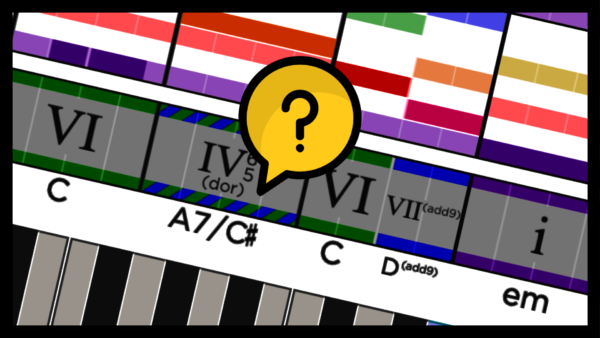 Do you want to write your own chord progressions for your music?
Do you want to write your own chord progressions for your music?
Chord progressions in music, is not rocket science! =)
In fact, if you follow these basic guidelines, you have a great starting point.
How to write Chord Progressions (7 Tips)
- Start By Choosing A Scale And Key For Your Music
- Find Out The Diatonic Chords For That Scale/Key
- Start And End Your Chord Progression On The Root Chord
- Focus Mainly On The I, IV And V Chords
- Use Chord Inversions For Smoother Voice Leading
- Enhance The Harmonies With Non-Triads
- Add Intermediary Chords And Transition Chords
1 – Start By Choosing A Scale And Key For Your Music
For example: D minor, G Major, or perhaps another scale or mode like: E Dorian or F# Harmonic Minor.
2 – Find Out The Diatonic Chords For That Scale/Key
When you have chosen your scale and key, you will have the notes of that key to base your harmonic language on. Meaning, you will have all diatonic chords (chords that uses only notes within the key).
3 – Start And End Your Chord Progression On The Root Chord
The root chord (tonic) is the tonal centre of your music. This is why it has so much of that “home” character. As a guideline you can start and end your track on that root chord. So in the key of C Major, the root chord would be a C Major chord.
4 – Focus Mainly On The I, IV And V Chords
The strongest chords in music, meaning the ones with the most “dominant” character, are the I (Tonic Chord) , IV (Sub-Dominant Chord) and V (Dominant Chord). In the key of C Major, these chords will be C Maj, F Maj and G Maj. And in the key of D minor, these chords will be: Dm, Gm and Am. Since the I-IV-V has such strong harmonic pull, you should consider using these 3 chord degrees more often than other chords in your progression.
5 – Use Chord Inversions For Smoother Voice Leading
To make your chord progressions sound smoother (less jumpy), you can change the inversions of the chords in your progression, so that each voice has a shorter distance to travel to the next chord. This is called voice leading in music. With a basic triad (3 note chord) you have 3 inversions to choose from: root position, 1st inversion (3rd in the bass), 2nd inversion (5th in the bass).
6 – Enhance The Harmonies With Non-Triads
Triads are the fundamental chords in music, and there are 4 versions of them: Major Triad, Minor Triad, Diminished Triad and Augmented Triad. But you can get a much more rich harmonic language in your chord progressions, by also using non-triad chords. For example 7th chords, suspended chords, add-chords etc.
7 – Add Intermediary Chords And Transition Chords
Don’t just write your progressions using 1 or 2 bars for each chord. Try adding in intermediary chords as for example half bar chords, or even transition 1/4th chords before bar changes.
Bonus Tip 1 – Chord Change Rhythm
Experiment with the rhythm of your progressions, meaning the length and timing of each chord change.
Bonus Tip 2 – Non Diatonic Chords
Experiment with spicing up your music and harmonic story by adding some non-diatonic chords. This can for example be borrowed chords from other modes, or even modulate to a different key.
